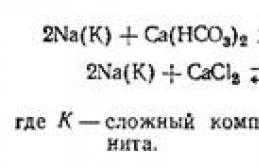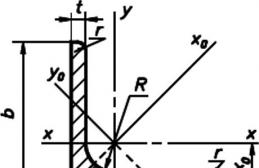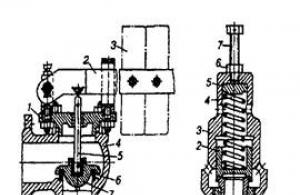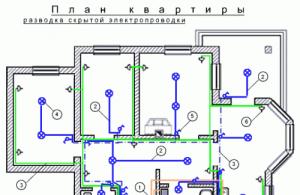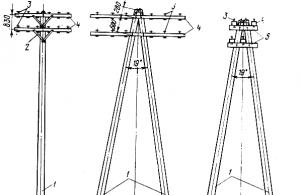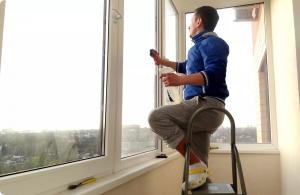At dachas (not all) there is a central water supply, but the water from the tap is often cold and dacha residents keep the water in barrels so that they can then start watering, since it is strictly forbidden to water plants and vegetables with cold water; this can lead to their death, and this not very desirable considering how much effort and time was spent on caring for this crop. And just washing your hands or face is not very pleasant with cold water. And it is not uncommon that the water can simply be turned off due to a breakdown in the water supply network.
It follows from this that you need to make a supply of water, and the more, the better for the summer resident and for his gardening. The standard dacha reservoir is a large capacity for a couple of cubic meters of water, some have more, some have less. Water from such reservoirs has to be scooped up in buckets and then distributed according to your needs for irrigation or for the washbasin, or for other household needs.
The author decided to radically solve this problem and make a personal water tower on his personal plot from improvised means in order to save the family budget. And so what is the principle of this design: everything is simple, the author makes a truss from corners and channels, and installs containers on it, in this case two plastic barrels of 200 liters and connected them to each other, the total volume is 400 liters. Water is supplied to the top from a general water supply hose (or). The water above quickly heats up and settles in the summer.
The author also laid out water pipes for the shower, for watering vegetable beds, for the washbasin, and even did something nice for his wife and connected a washing machine to the home water supply. The pressure is quite decent and the garden can be watered with warm settling water from a hose, which frees you from exhausting running around the garden with buckets and watering cans. And so let’s look further at what the author needed to build a water tower with his own hands.
Materials: 200 l barrels, metal corners and channels, cement mortar, silicone sealant, plastic water pipe.
Tools: welding machine, grinder, drill, hammer, pliers.

Then the legs were dug into the ground and filled with cement mortar so that the structure stood firmly on its own feet.

Next, I installed plastic barrels on top of this farm, which will serve as a reservoir.

And lastly, I installed water pipes throughout the entire dacha for the washbasin, irrigation, shower, and washing machine.
Ecology of consumption. Estate: . The construction of such a structure will be justified if the need for irrigation is needed over large areas, or a large consumption of water is required for private livestock farming.
A water tower at the dacha is not always a profitable and expedient solution for providing the house and garden with the necessary amount of moisture. The construction of such a structure will be justified if the need for irrigation is needed over large areas, or a large consumption of water is required for private livestock farming.
This will also be a good solution for those owners where there are frequent water or electricity outages, and the need for water supply to the house and household plot is constantly required.
How to construct a water tower, are there clear calculations and drawings, and how to calculate the optimal tower design based on your needs, I will try to talk about this in this article.
The construction of a water tower on a summer cottage site will be appropriate for those owners who already have their own well on the site. In this case, the construction of a tower will avoid unnecessary waste of electricity, as well as significantly save time on watering plants or providing water to animals.
Naturally, the question arises of how to calculate the necessary construction parameters. Let's start with it.
Calculation of system parameters
If there is a well with a connected pump on the site, the construction of a water tower is reduced to the construction of a gravitational hydraulic system, arranged on the principle of vessels communicating with each other.
For example, there is a need to water the garden or vegetable garden, as well as fill drinking bowls for animals. If we take the height of the drinkers to be about a meter, and to water the planting areas you use a hose that you hold in your hands, and the pipe system is divided into several branches, then it is necessary to correctly calculate not only the volume of the tank, but also the height at which it should be installed.
To calculate the required water reserves, and therefore the volume of the container for storing it, you can install a flow meter on the well for several days, and add about a fifth to the resulting value.
Since the pressure in the system depends not only on the height of the tank, but also on the range of use of the water resource, the calculation should be carried out taking into account the required range of water movement. There is a direct relationship - the need to move water 15 meters requires raising the tank by 1 meter. The cross-section of the pipeline must also be taken into account.
Let's return to our example. In it we need to raise the flow to a height of approximately 1 meter. And if for drinking bowls the height of the tower should be 2 meters 70 centimeters, for watering a slightly lower height is sufficient. Therefore, taking into account the small margin, the tank must be raised to a height of about three meters.
In this case, the pipeline cross-section should be made at least 50 millimeters, since it can provide a productivity of about a thousand liters per minute.
Tank selection
There are no strict requirements for choosing a reservoir for a water tower. Typically, several options are used for these purposes:
- Eurocube;
- Homemade tank;
- Barrels.
A Eurocube is a container with a volume of one cubic meter. Such a container has a metal frame that provides the necessary strength, as well as all the holes necessary for our purpose. Such containers, if necessary, can be installed on top of each other.
Homemade structures welded from sheets of metal and reinforced with stiffeners are also used as a reservoir. Such a tank is used less often, since not everyone is able to weld with the proper quality, and secondly, rolled metal quickly oxidizes. Accordingly, the tank does not have a very long service life.
And of course, mating barrels are often used as a water reservoir. They are not at all expensive, but buying them can be problematic, since these containers are in high demand, especially in dacha cooperatives. published
Date of publication: April 20, 2011
Running water is good. Running water in a dacha is already a necessary luxury. What to do if there is no stationary running water, if there is no stationary electricity, but your wife demands comfort?
The answer is to build a water tower. I’ll say right away that I’ll try to describe my own experience, unfortunately there are no photographs of all stages, I’ll have to use words.
So - let's go.
Stage one.
How much water do you need at your dacha?
The answer would seem obvious - well, no less than in the city, and maybe more. I had a completely different opinion. When a resource is not available, it becomes expensive and must be saved. When there is no central water supply, but, fortunately, there is a well, water consumption from the “urban cycle” turns into “normal”.
- Urban cycle - open the tap and let it flow. It’s inexpensive, you don’t need to carry it in buckets, and you don’t need to pump it with an expensive pump driven by an expensive generator running on expensive gasoline. We won’t save money, in case someone thinks we’re rednecks. How much water will be left for our children - let the children think, it won’t be enough for them.
- Normal consumption - I will pour exactly as much as I need. Not a bit, but I won’t seal the container hermetically to prevent it from evaporating.
But this is a lyrical digression, let’s return to barrels and towers.
As it turned out, 1000 liters is enough for a week. Now I understand that it’s enough, there were doubts before construction. They decided simply. Is 1000 liters more than the 30 that are in my container? Yes, more. Which barrel can I get? Just for 1000 liters. The so-called Eurocube.
I found the picture online, I got a black barrel.
It was for this very barrel that I began to design a tower.
Stage two.
How to fix a piece of iron in the ground?
Using simple geometric constructions, a calculator and the rule “a triangle is a rigid figure” remembered from childhood, it was decided to build a triangular tower, i.e. on three legs.
As a bonus, we received savings on one corner 100X100 mm, as much as 7.5 meters long, and a huge hole for the foundation of the 4th support.
A few words about the foundation of the water tower. I immediately wanted to make it strong and last for a long time. Drilling a hole in the ground, sticking a support in it and concrete it is a bad idea. This is not a fence, the walls won’t hold up, and the bottom of the hole will collapse. Simply driving a pile into the ground is also unrealistic, we proceed from the fact that there are a couple of Uzbeks and a couple of owners and no more equipment. The following thought came to mind and was later justified. Make the bases large and in 2 stages.
The first is the main pit, in my case 1x1x2 m (2m is the depth). There are 3 of these.
Then they made an insert from thin boards to create a concrete glass 0.5x0.5m.
There are no photos of the process either, so I’m telling it from my fingers.
They poured 50 cm of concrete into the main hole, put in an insert, pushed in the reinforcement and, pressing the insert down with a board with piled stones, poured the outer perimeter. When the concrete set (2-3 days), the insert was removed. The result was a glass with a half-meter concrete bottom. With strong walls along which the support easily slid into place. 
Here is what is now peeking out of the ground. In fact, the concrete cube is MUCH larger :)
Stage three.
How high can you lift a cubic meter if there is no crane and you can’t drag it?
Why was 6 meters the height chosen? Yes, the metal is cut into such pieces at a metal depot and it is still possible to bring one like this. If it is longer, difficulties may arise. By the way, I still had to cook, but at 6 meters there was less waste.
For reference, they built 2 similar water towers at once, mine and a neighbor’s, and calculated the consumption for 2 at once. Therefore, the most expensive parts were decisive. And these are the very corners for the main supports.
And as it turned out, it is quite possible to vertically install a 7.5 meter (1.5 meters in the foundation, 6 on top) piece of iron from a 100mm corner using 4 people.
To my great regret, I was not present during the ascent, so there will be no photos.
But it seems that A-frame technology was used. Roughly - two beams, sewn in the shape of the letter A, with a cable thrown through the top. We pull the cable, the A-beam rises, and lifts the leg tied to it. According to stories, the climb took a couple of hours using 3 supports.
Final stage
What happened in the end, how was it in winter?
As a result, the tower was welded  ,
,
painted and equipped with a platform  ,
,
And they hoisted the Eurocube onto it using a winch  .
.
Then they provided a pipe system, I think it was PVC, black, hard. And a valve system 
Here you can see inlet, outlet, drain and future pipes. The house is just being built now, and water supply is also planned for it.
Of course, the water needs to be drained for the winter. The pipes may break...
The system survived the winter with absolutely no losses; the system was drained last year, around the 20th of November, and flooded on April 23.
The pump was overwintered in the well, everything is fine with it too.
This is definitely the last stage
Regrets or what you would have done differently
1. I made the topmost trim from the corner of the 45th. It was necessary not to save money and to make it from 100... When the barrel is filled, it contains 1000 liters, therefore 1000 kg. These same 45 corners bend a little, which strains my innate sense of beauty.
2. It was necessary to orient the flat side of the triangle to the south, and not one of the supports, like mine. Then the question of how to attach a solar panel to a tower would not cause so much thought...
3. The lower trim (that which is horizontal) could be made higher. It’s unlikely that anything would loosen, but a shed for storing unnecessary things could come out. And so - don’t crawl up, don’t climb over...
PS
If you have any questions, write them in the comments, I will try to answer.
P.P.S.
On this tower I erected
Water tower at the dacha– the key to a good harvest and excellent rest. A dacha without water turns labor on the land into a heavy duty. Available water is the main component of successful agricultural work in the country. Therefore, the question of the need to own your own water tower is quite relevant today. What can this give, how much will such luxury cost, and is a tower really a luxury and not a necessity? The questions are actually not as difficult as they seem. The answers to them are further in the publication.
What kind of water tower can a country house look like?
For summer residents, the problem of various water supply difficulties is most pressing. Therefore, a water tower is truly an indispensable structure on a summer cottage. Its main advantage is its reliability and ease of use. For this reason, until today, in small settlements and dacha communities, water pumps are used by the common people to provide centralized cold water supply. Their key purpose is to regulate both water flow and pressure in the network, as well as the formation of the required water supply. The latter is mandatory, for example, in case of fire. A typical water pump is a large container intended for water (usually in a cylinder configuration) and a supporting structure. In addition, such an object must be equipped with outlet and supply pipes, special overflow devices that prevent the tank from overfilling, and a measuring system.
What is the operating principle of a water pump? Everything here is elementary simple. When water consumption decreases somewhat, the excess water supplied by the pump accumulates in the container. It is spent from it when there comes a period of increased water consumption. A water pump can thus become the key to the necessary water supply, with its almost imperceptible gradual accumulation.
Let us clarify that professionally constructed water pumps can be quite high and reach, and sometimes exceed, 25 meters. Homemade analogues, as a rule, are presented in small forms and most often it is an ordinary 100-200-liter barrel, raised to a certain height (no higher than 2.5 m).
What is required to install a water tower in a country house?
You can build a simple water pump at your dacha for watering agricultural crops yourself. How to do this using a small amount of fittings and an ordinary large container, you can find a lot of tips and recommendations on the Internet, including not only text with photos, but also with videos and step-by-step explanations of each of the technological operations. In any case, in order to install a water tower, neither more nor less, but only 2 important conditions must be met. First: there must be a source of water. Secondly, you need electricity. The rest is a matter of technique, desire, skill and skill. But, of course, a professionally made water tower will be much more productive and more pleasing to look at at your summer cottage. For example, this could be the so-called Rozhnovsky tower.
Who is capable of fabricating and professionally installing a water tower?
The company MPO Engineer LLC (Mikhailovsky Production Association Engineer LLC) specializes in the professional production and installation of Rozhnovsky towers. The plant, having its own production sites, produces water pumps both according to standard and individual designs. The company carries out both delivery and installation work, if the customer needs it.
Towers from MPO Engineer LLC are designed to regulate irregular water consumption, preserve both the limited water reserve and the fire reserve.
A huge advantage of working with professionals is the reasonable selection of the height of the column, as well as the volume of the structure. It is guaranteed to be based on serious technological calculations.
Let us note that Rozhnovsky’s towers are truly successful structurally, due to their simplicity and highest efficiency. Such a building can boast a whole list of advantages, as well as a fairly long service life, subject to the basic tenets of operation.
List of water pumps produced by MPO Engineer LLC:
- VBR-15 with a tank capacity of 15 m 3, a height of 14.79 m;
- VBR-25 with a tank capacity of 25 m 3 and a height of 16.5 m, 19.5 m;
- VBR-50 with a tank capacity of 50 m 3 and a height of 23.5 m, 25.5 m, 26.5 m;
- VBR-127 (column) with a tank capacity of 127 m 3 and a height of 25 m;
- FBR 160 (column) with a tank capacity of 160 m3 and a height of 25 m.
How to place an order for the production of a Rozhnovsky tower
In fact, placing an order for the production of a Rozhnovsky tower is as easy as shelling pears. To do this, you should fill out a form on the plant’s resource and wait for a commercial offer from the manufacturer. There is nothing difficult to fill out. It involves entering information in the following fields:
- contact information (client name, phone numbers, e-mail, contactee);
- technical requests (length, diameter and capacity of the water tank, thickness of the base material, diameter of the support, the presence of a fence on the roof, an upper and lower inspection hatch, overflow pipes, ladders, ice-holding brackets, painting, guy wires, the need for delivery, as well as installation work on the customer's premises).
- additional plan requirements.
After filling out the form, the resource will automatically give you the cost of the object you have chosen, and then you decide which option is the most attractive, economical and comfortable.
How advisable is it to install an individual storage tank? How to build a water tower on your own property? What formulas should be used to calculate pipe diameter and water flow? Which foundation to choose? Our article will tell you about all this.

In the previous article, we talked about the designs, types and functions of water towers (WTOs). When it comes to water supply to an entire region or village, the installation of such a serious structure is certainly justified. But will it be useful to a private owner?
In what cases is it advisable to install your own water tower?
- When connected to the city water supply. The private sector with gardens and vegetable gardens is a stable and powerful consumer of water, so during the peak season there is often a drop in pressure in the pipes.
- If there are large areas to be irrigated. The water supply will ensure timely watering and maintain plant growing technology.
- When engaged in livestock farming. This type of activity requires constant consumption of clean water. In the tank, the water will settle and be heated naturally.
- In case of unstable water and electricity supply. You will be able to fill your own tower during the best pressure (tension), for example, at night. Installing simple automation will ensure that the water supply system operates autonomously.
- When using your own well. VB will allow you to save energy and the resource of the pumping station thanks to the optimal operating mode.
A simple analysis shows that having your own water tower is not a strange whim, but in many cases it is an urgent necessity. Reduced by tens of times, it will be the key to reliable operation of pumps and constant uninterrupted water supply to a single farm or home.
How to calculate a water tower
We will talk less about a full-fledged water tower, and more about a gravitational hydraulic system based on it. The rule we know - “the bottom of the tank should be located above the highest point of consumption” - says that it is enough to install the tank at a certain level, which is not difficult to calculate.

Note. The initial condition is the presence of a source - your own well with an installed pumping station or a connection to the city water supply.
Let's say there are two consumers - a vegetable garden and a cowshed. The first is located 35 and the second 25 m from the source. At the same time, the drinking bowls in the barn are installed at a level of 1 meter. Watering the garden is carried out from ground level. The pipeline branches have a minimum common pipeline section (i.e., they diverge close to the reservoir).
Finding out water consumption
The volume of the tank directly depends on this indicator. What takes place here is not calculations, but observations. It is necessary to install a water meter at the pumping station (source) and experimentally determine the daily flow rate. Let's say the average consumption was 5 cubic meters. m/day. The volume of the tank should be 20% larger, take 6 cubic meters. m.
Calculate the installation height of the tank
To withstand pressure, not only the difference in height is important, but also the distance of the consumer from the source. 1 m of water movement vertically is equal to 15 m horizontally. That is, in order to effectively move water “by gravity” 15 m horizontally, a difference of 1 m is required. In this case, not the length, but the cross-section of the pipe is calculated from the aggregate. The maximum length of one pipeline branch is taken as the calculated length.
Estimated pole height for the first branch ( N st 1) will be equal to:
- N st 1 = 35/15 = 2.3 m
The second branch (cow barn) has a level difference as it increases (drinkers) and this must be taken into account.
Estimated pole height for the second branch ( N st 2) will be equal to:
- Nst2 = 25/15 + 1 = 2.66 m
Despite the fact that the second consumer is located closer, it requires a higher column due to the difference in levels. The total calculated value is the largest indicator, i.e. 2.66 m. Add 15% of the reserve and accept N st = 3 m.
The calculation shows that under these conditions the bottom of the tank should be at a level of 3 m, while the initial pressure in the system (at the bottom of the tank) will be equal to:
- Р=рхghхh, Where
- R- water density (1000 kg/cubic m)
- g- acceleration (9.8 m/s 2)
- h- height of the water column
- P = 1000 x 9.8 x 3 = 29400 Pa = 0.294 MPa = 0.3 bar
Calculate the pipe diameter
This is where things get a little more complicated. The required diameter is calculated using the flow rate and water consumption. According to Toricelli's law:
- V2 = 2gh, Where V- flow speed, and h- the height of the pillar we get:
- V 2 = 2 x 9.8 x 3 = 58.8
- V = square root of 58.8 = 7.66 m/sec
We calculate the cross-section of a 50 mm pipe using the formula S = Pr 2:
- S = 3.14 x 0.0252 = 0.0019625 sq. m
We calculate water consumption ( R) according to the formula R=SV:
- R = 0.0019625 x 7.66 = 0.015 cu. m/s = 15 l/s = 900 l/min
If the water flow per hour is known in advance, then the pipe diameter can be calculated using the formula:
- D = 2 square root of S/P, where S = R/square root of 2gh
In our case, a water flow rate of 900 l/min is quite acceptable - the entire supply can be discharged in 6–10 minutes. In this case, the diameter of the 50 mm pipe should not decrease.

Attention! Each 900 elbow gives a pressure loss of 5–7%. Design a system with a minimum number of corners.
Selecting a pump for tanks
As a rule, pumping stations are installed in a well caisson. It makes sense to build a water tower directly above the caisson. This will allow you to combine all the components in one place, which in turn will simplify repair and maintenance. We talked about how to choose a well pump in one of the previous articles. The water supply volume of an average pumping station ranges from 4 to 9 cubic meters. m/min, which fully satisfies the needs of a conventional economy. The cost of equipment (pump, filters, fittings) will be approximately 15,000 rubles.
Selecting tanks
Water containers can be of any kind, but must meet the requirements of tightness and be suitable for drinking water:
- The best solution is cubic tanks with a volume of 1 cubic meter. m in a metal frame. They are called "Eurocube". They usually have overflow, bottom and side openings for combining several tanks into one system. Thanks to their cubic shape, they are stable and take up minimal space. The frame allows you to install them on top of each other, which will increase the size of the column. The cost of one new Eurocube is 8,000 rubles, used - 4,500 rubles. You will need 6 such cubes. - 48,000 and 27,000 rubles. respectively.
- Solid homemade tank. It can be made on site from sheets of metal with stiffeners. This option may be unacceptable due to the deterioration of the properties of water during metal oxidation. Or you need to use higher grade steel.
- Conjugated barrels. Ordinary metal barrels of 200–240 liters can be the solution on a modest budget. They also allow a multi-story layout and are inexpensive - 500 rubles / piece. (new). For 6 tons you will need 12 pcs. total cost 6000 rubles.

Selecting a support system for tanks
In any of the above-described cases of selecting a tank, we will need a platform of 2x2 m at a height of 3 m. The estimated mass of water at maximum load is 6 tons. To hold such a mass, a foundation structure is required and there are two acceptable options.
Steel frame
Made from metal pipes. It consists of a foundation, racks, diagonal rods, platform plane material and, if possible, a canopy. Racks made of pipes with a diameter of at least 75 mm are concreted in increments of 500 mm along the entire plane of the site. Diagonal rods (1-inch pipe, strip, fittings, etc.) create spatial rigidity. The platform must be welded from a metal corner 45x45 mm or more. From the edge of the platform to the wall of the tank, leave a margin of 250–400 mm for possible insulation.

Walls (box)
A strip foundation of approximately 2.5 x 2.5 m is installed around the caisson, into which 75 mm pipes are concreted at the corners. Then the walls are laid out from cinder block or brick (1 brick thick). Stone pillars are laid out at the corners. For floor beams, use an 85–100 mm channel with a pitch of 500–600 mm. Subsequently, the structure can be equipped for auxiliary needs.
Pipes
As can be seen from the conditions of the problem, the total length of the main line is 25 + 35 = 60 m. 20% for expenses, a total of 75 m. The price of a polyethylene pipe is approximately 60 rubles / sq. m. m. Total 4500 rub. per pipe + 500 rub. for fittings = 5000 rub.
When setting up a water tower for year-round use, remember about insulation. Even if it is empty in winter, some layer of insulation will protect the tanks (unless they are steel) from temperature deformations.
In the next article we will tell you how to arrange a hydraulic system at home and how to create a combined water tower for your home and household.
Vitaly Dolbinov, rmnt.ru
